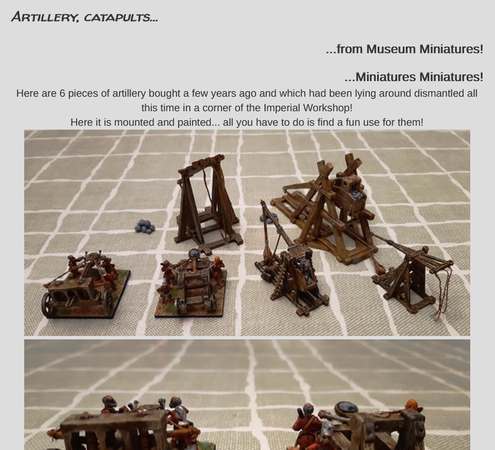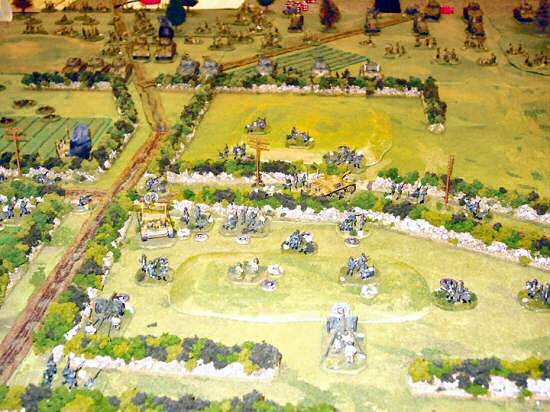The Plan
For this last outing, we have Alpha's Roman Signifer. My primary sources for this figure are The Roman Legions Recreated in Colour Photographs – Europa Militaria Special No.2 by Daniel Peterson, Crowood Press, 1992 and Osprey Men-At-Arms #46 The Roman Army from Caesar to Trajan by Michael Simkins, 1984. I also received some invaluable insights from the good folks at the MedRom forum on Delphi. If Medieval or Roman times do it for you, you really owe it to yourself to belong to this forum, even if it isn't about military miniatures.
The key thing I learned from MedRom was that the cavalry helmet worn by this figure (also known as a sport helmet) is always portrayed so shiny because the Romans put a very thin silver plate on the outside surface and buffed it to a high gloss. They also sometimes used copper.
The portrayal of this shiny surface became the focal point of the figure. As I would be using paint to produce the sport helmet, I did not want to use the burnish-and-smoke paint technique on the chainmail, as I have with the other two figures. I find using natural metal on some items and paint on some others for metal of approximately the same color looks odd. So the chainmail must be painted. In most other respects, I will use the photo on page 49 of the Europa Special book as a guide.
I will also be making one last change from the last format I tried. Seems a lot of people are distracted by the paint ratios. I will now move the specific ratios to the back of the article in an appendix. This way if they are not your thing, you can skip them.
As before, all paints are Delta Ceramcoat except for metallics, which are Vallejo, or as noted.
Pre-Construction
To start with, there were a few enhancements I wanted to make. First, I used a file to sharpen the spearpoint.

Then I drilled holes in the sword-hand pin and the back of the scabbard to install brass rods. The rods will pin the scabbard to the figure, as well as be good hand-holds during painting. If you look carefully, you can also see that I used a file to reshape the blade of the sword slightly. The blade now has a sharper edge, and tapers to a point with a slight curve.

I also wanted the standard to be a little more rugged. In the next photo, I have cut a brass tube to the length of the spear shaft, and have also drawn an outline for later location purposes. In the following picture, you can see that I have cut off all the details from the standard, and drilled out the hand/tassel portion to accept the brass tube.

I started to reassemble the standard by putting the spearhead and placard back on. Here, you can see I drew a straight line for alignment, and held everything in place with poster tack while the 5-minute epoxy set.

I then used the previously drawn outline to epoxy on the disks and the hand/tassel piece to the rod.
With pre-assembly over, let's move on to painting...










